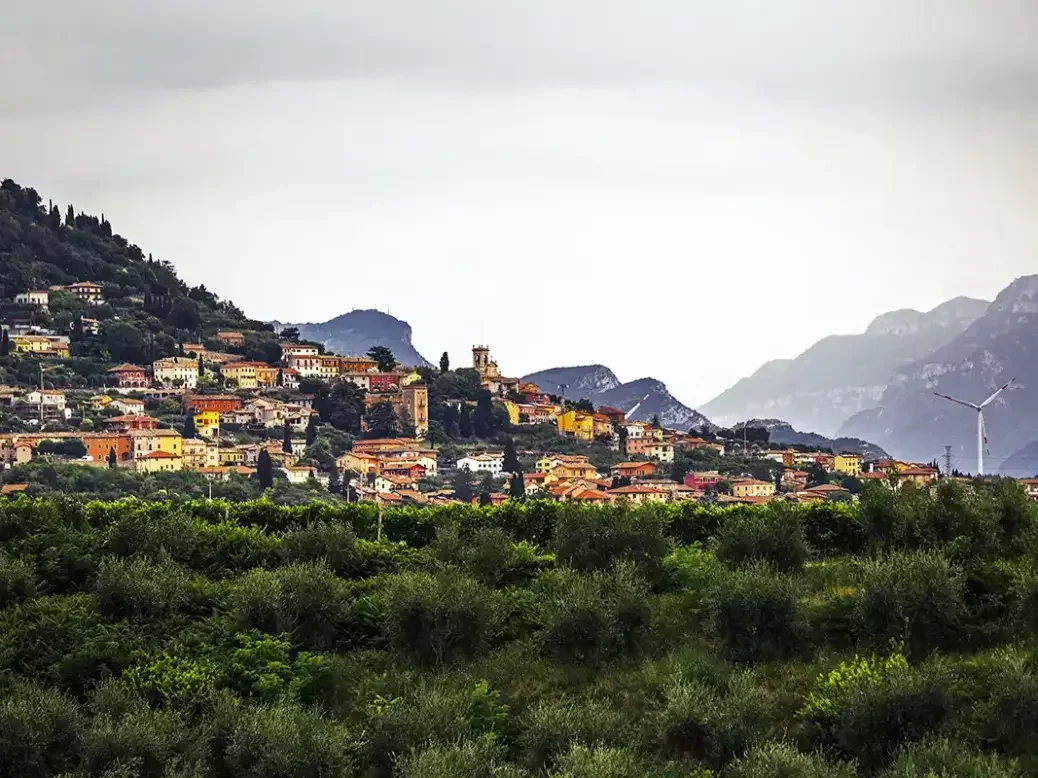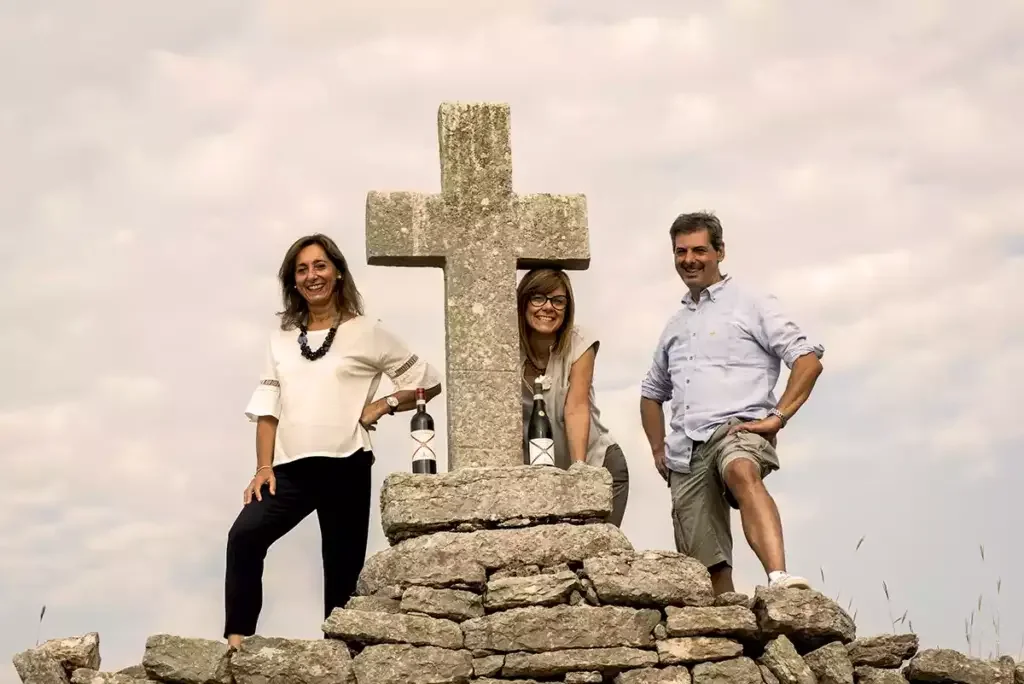
On her latest visit to Valpolicella, Sarah Marsh MW explores the vineyards and tastes both apassimento and fresh-grape styles, seeking out producers that reflect her belief that the northeastern Italian region has some very special terroirs.
It’s a tough job but someone has to do it. A flight of 75 samples opened the 2019 Amarone Prima tastings in Verona. The 2019s are pleasingly energetic and focused, brighter than 2018 which in turn was less rich than the ripe 2017 and full-bodied 2015 vintages. It shares fresher acidity with 2016, but is less muscular and compact. You must go back to 2013 for a light and elegant vintage.
But those who have read my previous articles on Valpolicella will know my interest lies in the terroir of the Veronese hills and valleys, which is expressed most clearly through Valpolicella DOC wines made with fresh grapes, rather than relying on the appassimento technique. Secondo Marco and Ca’ La Bionda make exemplary examples of lucid, terroir-focused Valpolicella and the latter’s Casalvegri is a shining example of a single-vineyard Valpolicella.
Tedeschi: Single-vineyard pioneers
This year I headed for Tedeschi’s vineyards, since Renzo Tedeschi was among the first producers in the region to make a single-vineyard wine way back in 1964. Monte Olmi vineyard, which is used exclusively for Amarone Riserva (around 10,000 bottles a year), lies in San Pietro in Cariano below the southern end of the Marano valley. Bought in 1918 and since extended to 2.5ha (6 acres), the steep and terraced section of the vineyard is clearly visible from the road. At 160m (525ft) it’s fairly low lying and from the deepish red clay and warm southwest exposition a bold and showy Amarone emerges. In the full-bodied, sumptuous 2017 Capitel Monte Olmi the ripe vintage is accentuated by 120 days appassimento. Lengthy grape withering and barrel maturation contribute notes of garden herbs and tobacco, while the mature 2005 has inviting freshness. Despite being a single-vineyard wine, Monte Olmi is more reflective of technique than terroir.
In pursuit of a more focused expression of terroir my interest quickly swivelled to La Fabriseria, Tedeschi’s 5ha (12 acres) vineyard on the border of the Fumane valley and Sant’Ambrogio. Sant’Ambrogio is the warmest district of the Classico region—closest to Lake Garda and influenced by its moderating effect on the climate. I arrived with Sabrina Tedeschi just in the nick of time as the sun was setting. Ten kilometres (6 miles) distant, but clearly visible from our vantage point, the gleaming water streamed brightly across the horizon, for La Fabriseria lies high on the hill above the pretty village of San Giorgio di Valpolicella. The 500m (1,640ft) altitude, together with the limestone soil (shallow and so well drained that irrigation is essential), keep the Valpol’ airier and fresher than the lake’s proximity would suggest.
I feel La Fabriseria Valpolicella Superiore reflects the lake influence in its warm floral aromatics and strawberry fruit, its gently rounded shape, and its supple texture. The scented 2017 has a richer and fuller palate, but both are refined, and fresh and mineral on the finish, reflecting the altitude and soil. The grapes have two weeks of drying, which seems unnecessary. Fresh grapes would make a lighter wine, quite sufficiently concentrated and probably more transparent to the terroir. La Fabriseria was planted in 2000 when guyot was the recommended trellising system in Valpolicella to promote ripeness. Oh for a crystal ball. To preserve freshness and avoid high sugar, this vineyard is no longer trimmed allowing the leaves to shade the grapes, simulating the traditional pergola system.
A single-vineyard Amarone Riserva, approximately 2000 bottles, from the top section of La Fabriseria was produced in 2011, 2015, and 2016. Prior to this La Fabriseria Amarone Riserva was a selection of the best Corvina, Corvinone, and Rondinella from across Tedeschi’s vineyards. It was launched in 1983 and made only seven times. 1995 is still super-vibrant and persistent.
Fabriseria Amarone Riserva (singe-vineyard) is rich, but fresh and slightly bitter; sleek, intense, deep, and channelled with well-defined edges. Bitter notes of dried cherry and black chocolate carry into a long salty, sapid finish. This tasting note could do for either vintage. I tried 2015 (juicier cherry) and 2016 (savory and tart), but what most impressed me is the strong vineyard identity they share, neatly illustrating that Amarone can reach beyond technique to terroir.

Up-and-coming Valpolicella
Now for two relatively new and unknown producers who caught my attention with their Valpolicella Superiore. In the Negrar Valley, the Righetti family were grape growers for three generations, purchasing their first parcel and a farmhouse (now also a winery) in the 1930s well before Gabriele began bottling the family’s own wine in 2012. Gabriele’s grandfather, Ettore Righetti, was president of the Negrar cooperative for 50 years affording him great insight into the terroir and the family have amassed a 20ha (50 acres) estate in four quite separate parcels across which the fruit is blended. Vigneti di Ettore wines are appealing. Valpolicella Superiore 2021 is juicy and sappy with a concentration of crunchy red fruit, while 2019 is bright, peppery, and floral. “It took me some years to make a Valpolicella I felt happy with,” says Gabriele. Now they are taking tentative steps towards a single-vineyard wine from Costa del Buso.
As we drove to Costa del Buso third-generation Giampaolo, who manages the vines, recalls his memories as a child. “Hard times when the region struggled to sell wine. Now things have somersaulted,” he remarks. Their wine may be easy to sell, but it’s clear this father-and-son duo are determined to push quality further. The 8.5ha (21 acres) Costa del Buso vineyard, huge for the Valpolicella hills, spreads over the crest of a 450m (1,475ft) hill. The vineyard is young, bought in 2005 and replanted from 2010 to 2015. Such a large vineyard with 360 degrees of exposure and soil—which Giampaolo describes as quite red and loose, but very varied—requires patient study to define the terroir. Even within the long rows some results are exciting, while others not at all. Intriguingly Giampaolo and Gabriele have identified a 1.5ha (3.7 acres) parcel on the southwest-facing slope. “Sunny, but windy and not hot, where the fruit ripens later,” says Giampaolo. The vines were planted recently in 2019, “but the fruit is the highest quality and it will become a cru.” Gabriele has experimented in 2022 and 2023 making Valpolicella and Amarone to determine which best expresses the vineyard. Watch this space.
Terre di Leone: Tuff love
Finally, back to the Marano valley to Terre di Leone a small 7ha (17 acres) estate scattered over several parcels where Chiara Turati and Federico Pellizzari made their first vintage in 2005. Their story started with just one hectare (2.4 acres) inherited from Federico’s grandfather which was planted with 14 traditional and authorized varieties. A yummy blend of all 14 is used in Dedicatum Rosso Veneto IGT. The 2018 has a smooth savory character balanced with tartness and finishes salty, but it was their Valpolicella made with fresh grapes which promoted this visit. The vines around the winery lie at 300m (985ft) on limestone soil, nice enough, but their most captivating vineyard sits at 450m on a 26-degree, southeast-facing terraced slope. It’s called Rocchetto. “The valley is shaped like an amphitheater. This particular conformation creates a gentle air circulation or funnel for the wind,” remarks Chiara. This parcel and 80 percent of their vineyards grow on volcanic tuff which is more associated with the eastern side of the Valpolicella DOC, but minor volcanic eruptions in the Classico area have left a legacy of volcanic outcrops.
The 2022 Il Re Pazzo Valpolicella Classico is pretty, delicate, and flowing while Terre di Leone Valpolicella Classico Superiore 2017 has a dark brush of glossy graphite, balanced with light tannic bite, while remaining silky. The Amarones are richly elegant and texturally alluring. I particularly like the fresh, slate-like minerality of 2013 Terre di Leone. The freshness of the wine here reflects the altitude, and possibly to some extent the volcanic soil contributes to their purity and savory character, while the texture may be a greater refection of the winemaking. In the high-tech, high-spec, beautifully formed, but rather small winery, there’s no room to experiment with single-vineyard wines. But despite their rather specific terroir this couple present their wine by style rather than as an expression of terroir.
I would love to see a more terroir-based classification in Valpolicella and surely this 6km (3.7 miles) stretch of volcanic tufa demonstrates how and why valleys could be divided into smaller sections to truly reflect the diversity of terroir. Currently there is a move to authorize naming the valley on the label. A few lone wolves already do this, but sometimes I feel the climate may change again before the prevailing narrative in Valpolicella turns from style to terroir.






